18 Wild Animals in Mozambique [Wildlife in Mozambique]
Want to know more about the wildlife in Mozambique?
Discover 18 wild animals in Mozambique in this post, as well as interesting facts about them. 🇲🇿
Learn All About Mozambican Animals
Ready to learn all about Mozambican animals?
I’ve always been fascinated by animals, and by how they can be so different from one country to another. In this guide, we’ll focus on the many animals Mozambique has on the land, in the sky, and underwater.
I’ve split the guide into 4 categories:
- Native animals from Mozambique
- Endangered animals of Mozambique
- What is Mozambique national animal?
- How many animals native to Mozambique?
Let’s dive in right away with our first category!
Native Animals from Mozambique
Mozambique is an African country located in the southeastern part of the continent, on the same latitude as Madagascar. It has rich and extensive natural resources, is mainly Christian, and used to be a Portugal colony, which is why the only official language of the country is Portuguese. It is bordered by Tanzania, Zimbabwe, Swaziland, South Africa, Malawi, and Zambia, and its capital and largest city is Maputo, which counts more than 1,088,000 inhabitants (but more than 1,766,000 if you include the metropolitan area).
An interesting part of the country that I wanted to tackle is its wildlife. In light of that, I have listed the best of it, and I hope you will love learning what animals live in Mozambique.
Here’s the Mozambique animals list.
1. Blue wildebeest
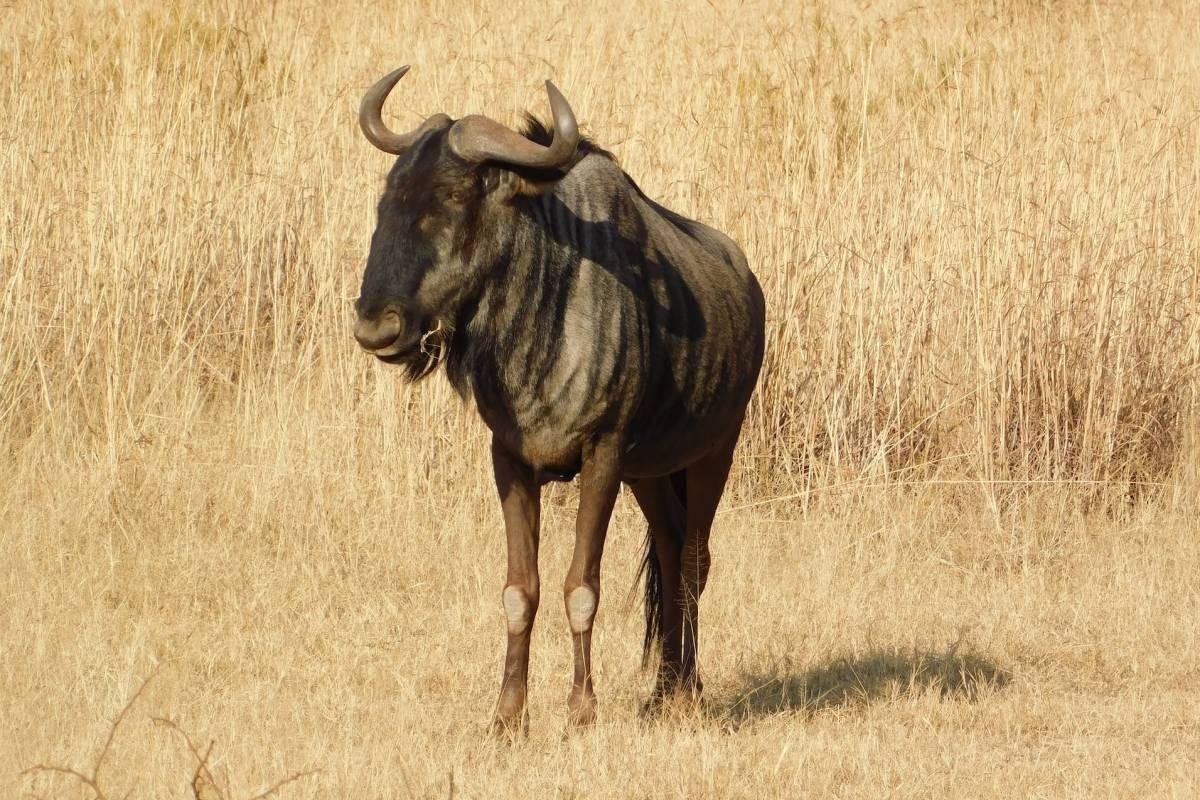
- Name: Blue wildebeest
- Scientific name: Connochaetes taurinus
- Conservation status:
The blue wildebeest, also known as the white-bearded wildebeest, the white-bearded gnu, the common wildebeest, or the brindled gnu, is a large species of bovid-antelope native to the southern parts of Africa. The other subspecies that can be found in Mozambique is the Nyasaland wildebeest.
This mammal can be found north of the Orange River in Mozambique, and all the way to southwestern Zambia and southern Angola.
2. African bush elephant
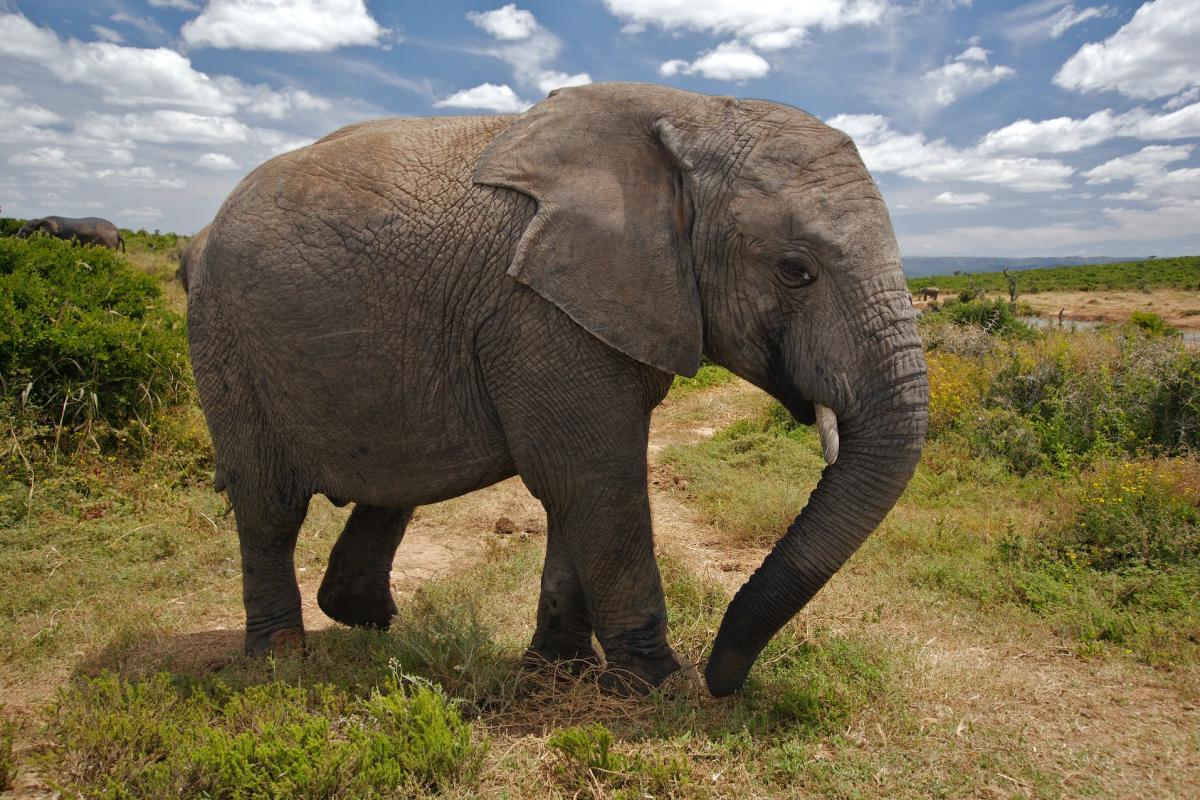
- Name: African bush elephant
- Scientific name: Loxodonta africana
- Conservation status:
The African bush elephant, also known as the African savanna elephant, is not only the largest terrestrial animal, but also a fantastic example of resilience: extremely threatened throughout the centuries by civil wars, poaching for its meat and ivory, habitat degradation, and loss and many other dangers, it is still present in several African countries, including Mozambique, and is more and more closely protected.
This elephant is one of two African species of elephant, aside from the smaller African forest elephant, and its females are pregnant for 22 months, which is the longest gestation period of any mammal.
3. Chacma baboon
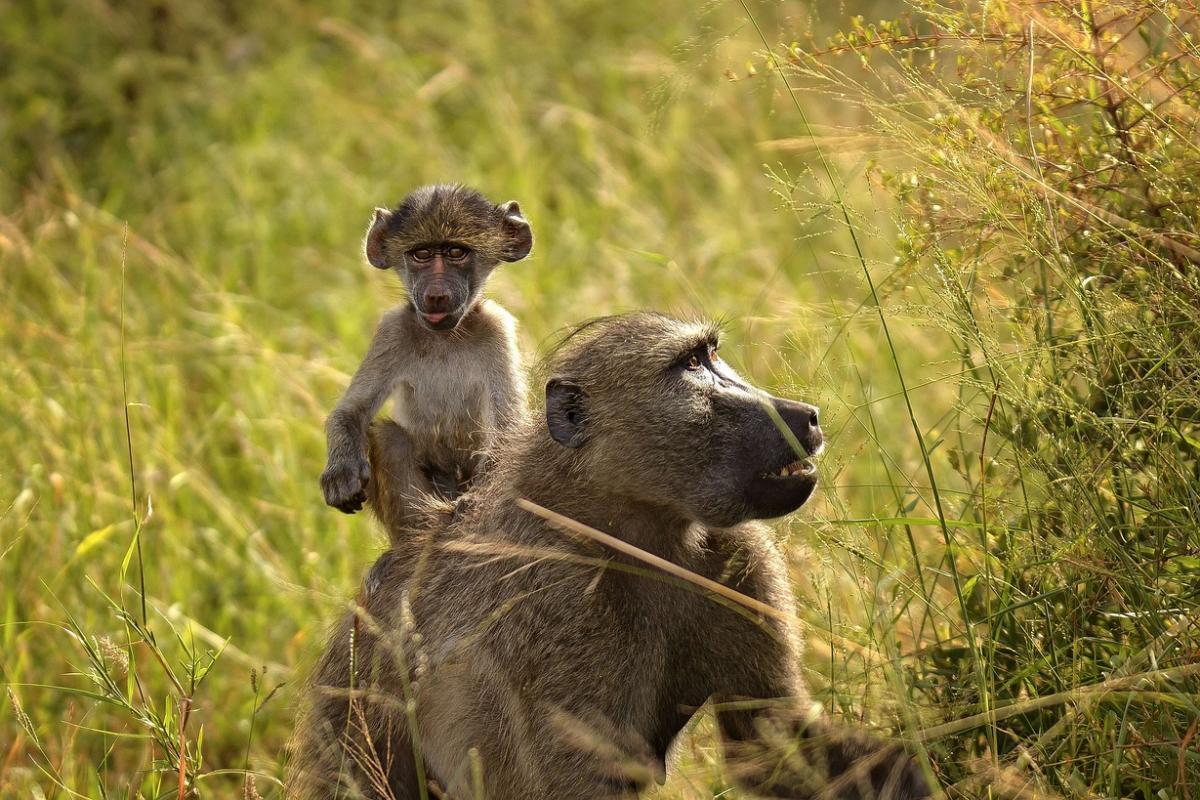
- Name: Chacma baboon
- Scientific name: Papio ursinus
- Conservation status:
The chacma baboon, also known as the Cape baboon, is a species of Old World monkey native to southern Africa. It is very interesting because of its unique social behaviors, such as the adoption of young by females, friendship pairings, and collective foraging.
In Mozambique, it can be found south of the Zambezi, where it gathers in large colonies. This baboon is omnivorous and highly opportunistic: it will feed on almost anything, from fruits, seeds, and grasses to insects, spiders, fungi, and small antelopes.
4. Black mamba
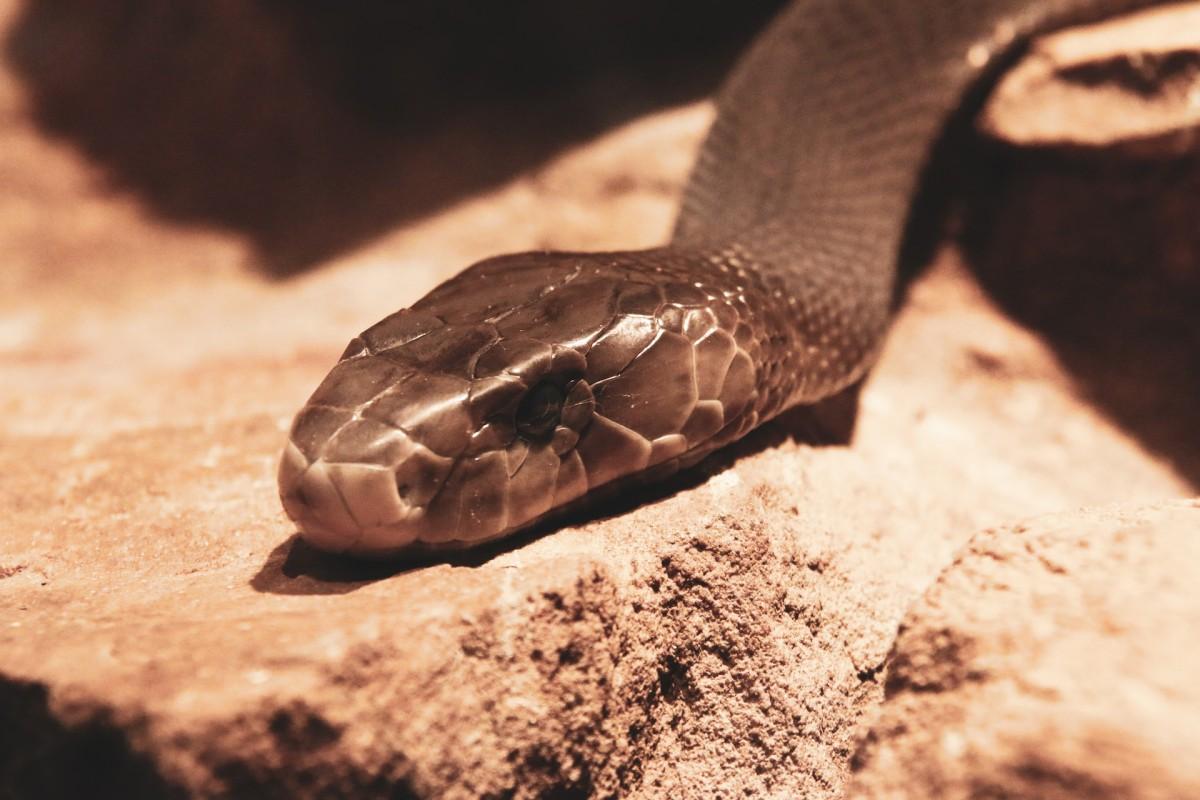
- Name: Black mamba
- Scientific name: Dendroaspis polylepis
- Conservation status:
The black mamba is a highly venomous species of snake native to sub-Saharan Africa, in two main areas: Central and East Africa, and southern Africa. It is particularly dangerous for its rapid, multiple strikes, its long range, its agility and unpredictability, and its surprising speed of 16 km/h / 10 mph.
This snake lives in woodlands, scrubland, semi-arid savanna, and lowland forests of Mozambique, and is both terrestrial and arboreal.
5. Southeast African cheetah
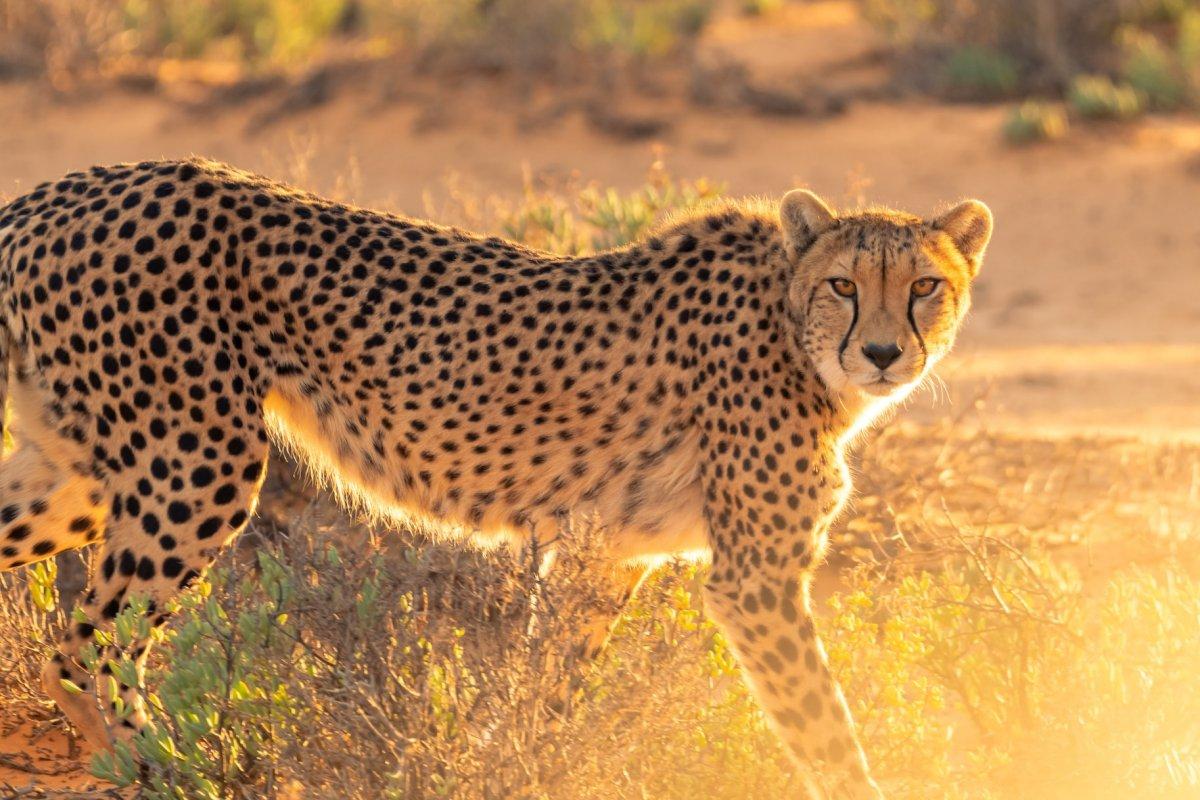
- Name: Southeast African cheetah
- Scientific name: Acinonyx jubatus jubatus
- Conservation status:
The Southeast African cheetah is one of the 4 subspecies of cheetah, and it can be found from eastern to southern Africa. While its range used to encompass about half of Africa, its populations are now much more scattered and isolated, and only a few individuals remain in Mozambique, while the largest populations are in the Kalahari Desert and the Okavango Delta.
The cheetah is well known for being the fastest terrestrial animal on the planet, reaching outstanding speeds of up to 128 km/h / 80 mph!
6. African leopard
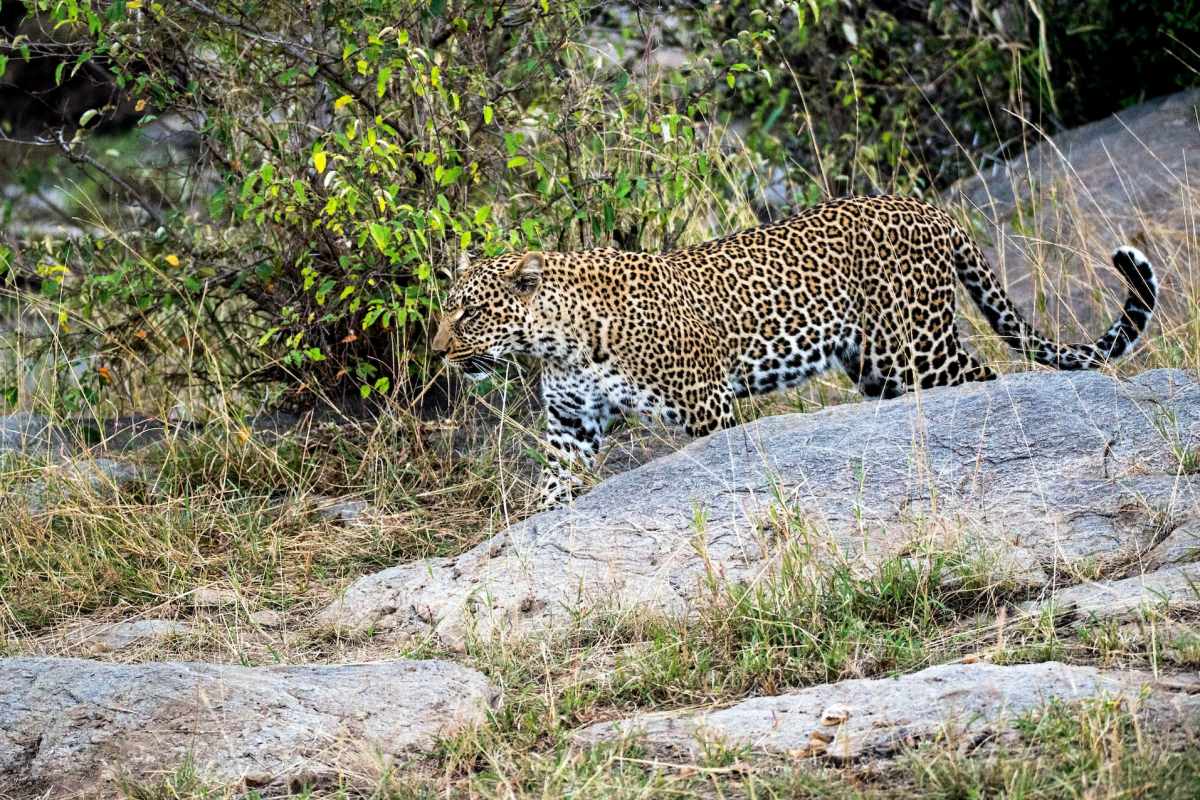
- Name: African leopard
- Scientific name: Panthera pardus pardus
- Conservation status:
The African leopard is the most common and widespread species of leopard. It is native to many countries in sub-Saharan Africa, but its range has been fragmented over the course of history.
This leopard can be found in the rainforest and arid desert habitats of Mozambique and is at risk in semi-desert areas because of conflicts with nomads and their livestock. It is listed as vulnerable to extinction because of habitat loss and fragmentation, as well as poaching and persecution.
7. Lion
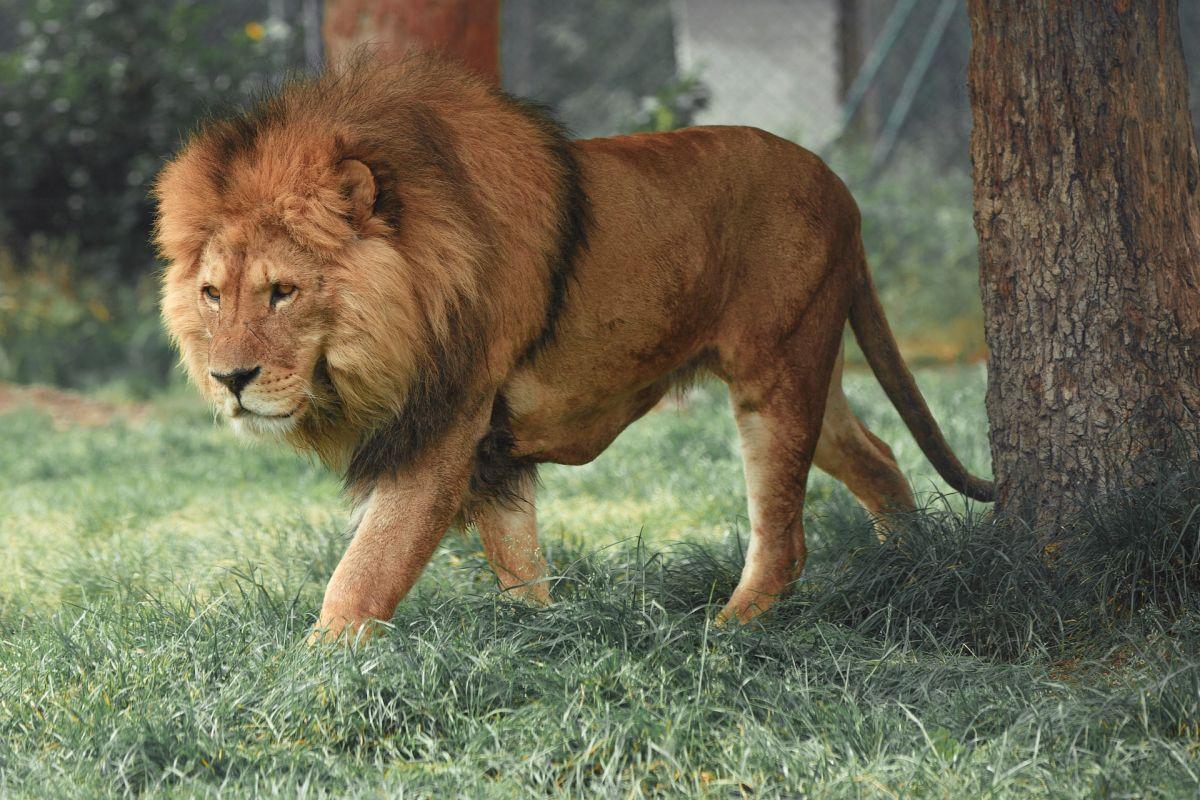
- Name: Lion
- Scientific name: Panthera leo
- Conservation status:
What would be a list of animals of an African country without this third and well-known big cat, the lion? The king of the jungle is one of the most widely important animal symbols in human culture, having been depicted in sculptures, literature, and flags for thousands of years.
In Selou National Park and the Lindi Province, near the Mozambican border, there have been lots of man-eating incidents: hundreds of villagers have been attacked, and many killed, by man-eating lions, especially at the end of the 20th century.
8. Waterbuck
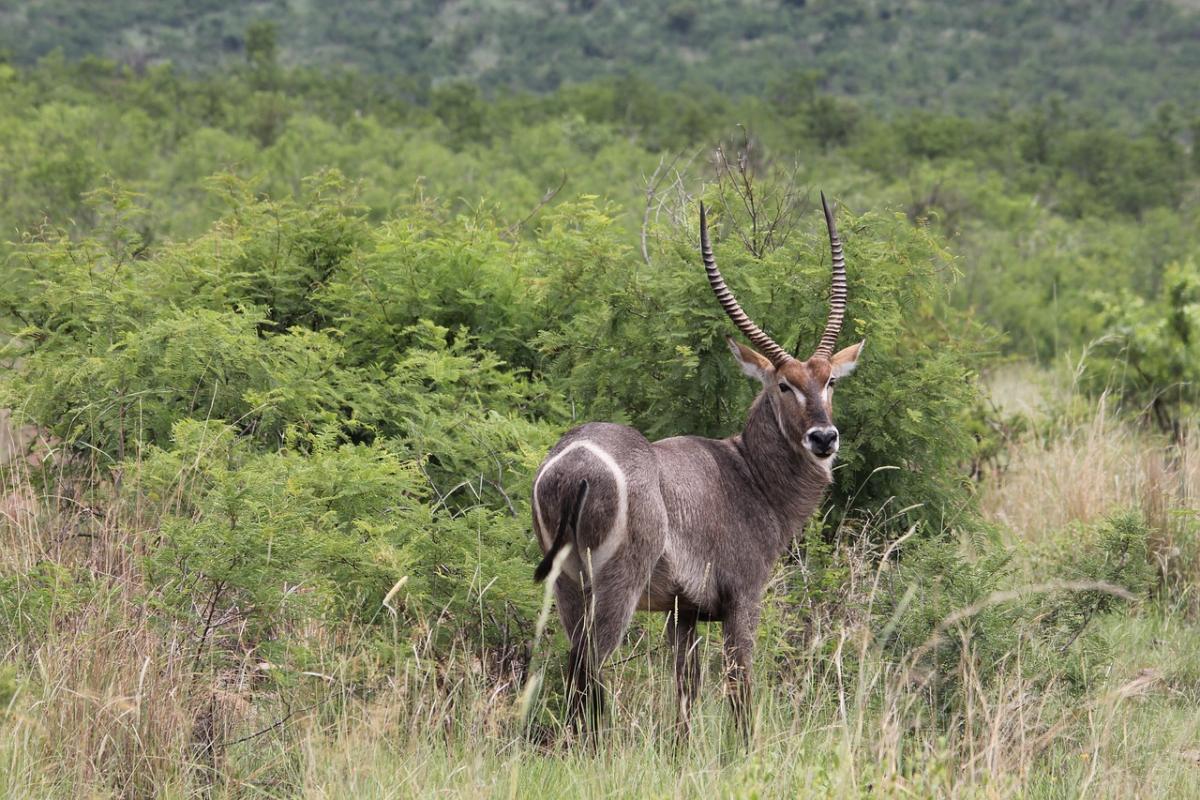
- Name: Waterbuck
- Scientific name: Kobus ellipsiprymnus
- Conservation status:
The waterbuck is a large species of antelope native to sub-Saharan Africa. It is further divided into two species, and the one that can be found in Mozambique is the common waterbuck, also known as the ellipsen waterbuck or the ringed waterbuck.
This antelope is sedentary, and gathers in herds of 6 to 30 individuals, either all-male groups or nursery herds with females and their young.
9. South African giraffe
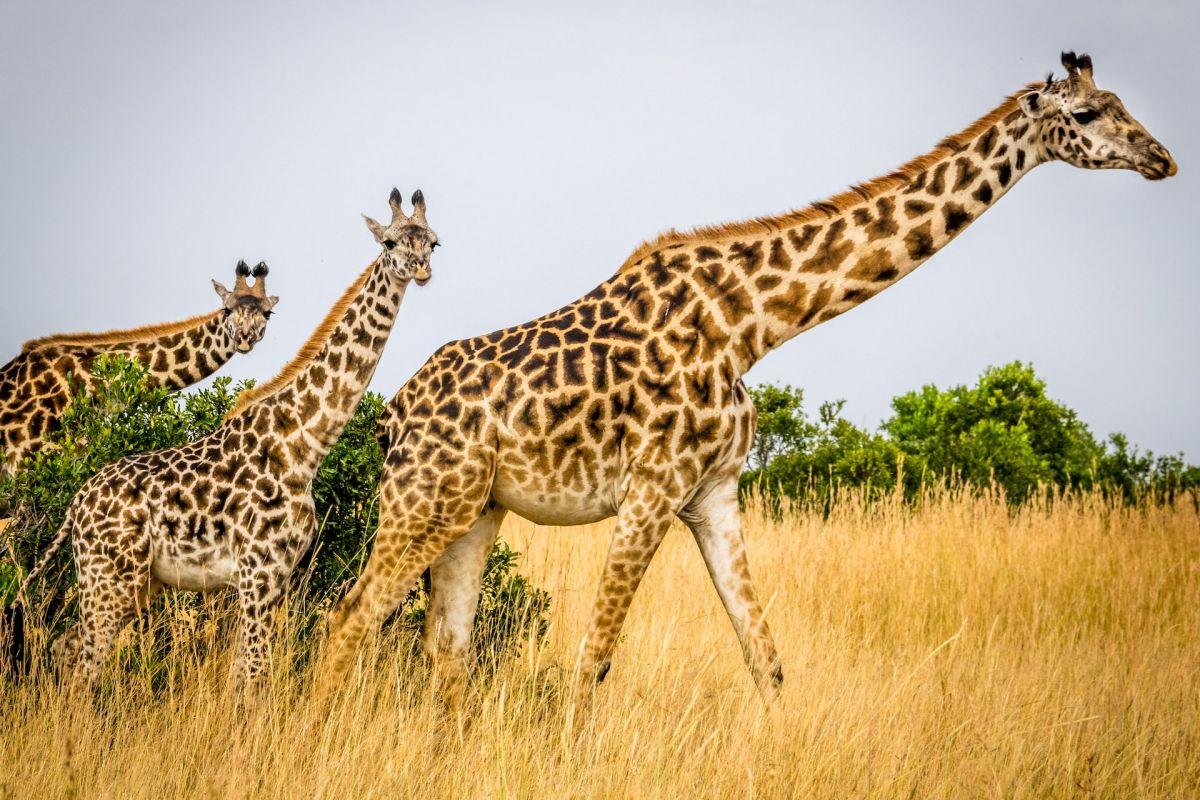
- Name: South African giraffe
- Scientific name: Giraffa camelopardalis giraffa
- Conservation status:
The South African giraffe, also known as the Cape giraffe, is a subspecies of giraffe native to several southern African countries, namely Mozambique, South Africa, Botswana, Zimbabwe, and Namibia. There are about 31,500 individuals in the wild, and they are threatened by habitat loss and poaching, and could very well disappear within the next decades if nothing is done to protect them.
There are only 45 South African giraffes in zoos around the world, and it is thus quite unlikely that you have ever seen one.
10. Hippopotamus
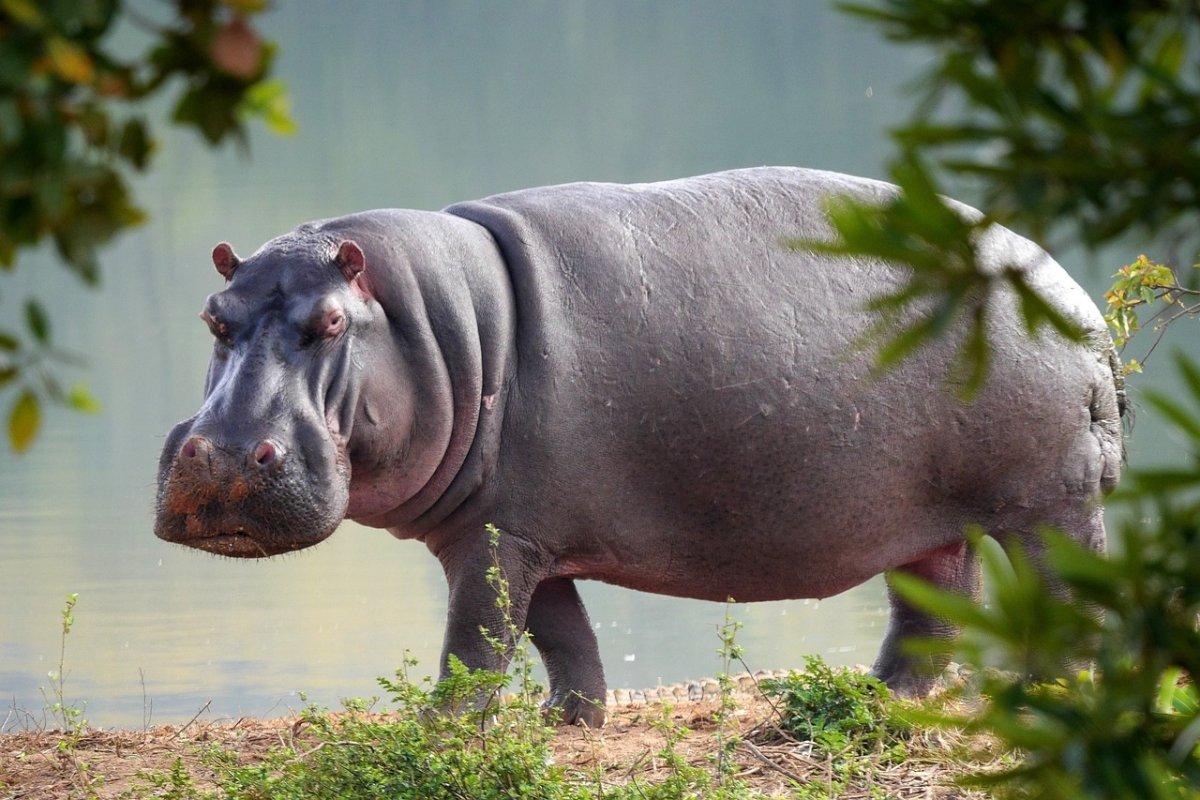
- Name: Hippopotamus
- Scientific name: Hippopotamus amphibius
- Conservation status:
The hippopotamus, also known as the common hippopotamus, the river hippopotamus, or simply the hippo, is a large species of semi-aquatic mammal native to sub-Saharan Africa. Over the course of history, it has suffered one of the most drastic range declines of all African mammals, being only found in small, scattered populations in myriads of countries, while it used to occupy all of sub-Saharan Africa and the Nile River banks.
This ungulate is surprisingly dangerous, and is in fact one of the deadliest animals in all of Africa, with highly unpredictable and often aggressive behavior.
11. Common warthog
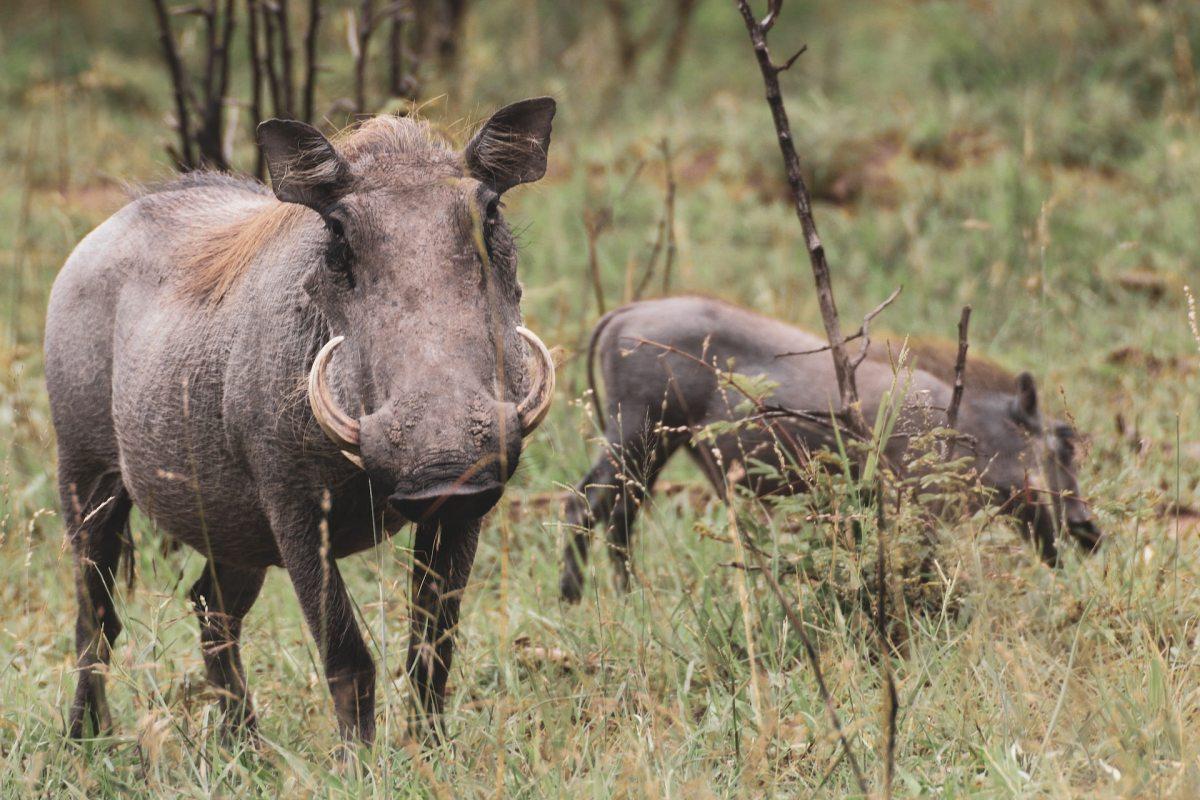
- Name: Common warthog
- Scientific name: Phacochoerus africanus
- Conservation status:
The common warthog is a species of wild pig native to sub-Saharan Africa. It is the only pig variant adapted to savanna habitats.
The warthog inhabits grasslands, savannas, and woodlands, and can be found throughout all of Mozambique. It is omnivorous, feeding on grasses, insects, bark, eggs, fruits, and carrion, and although quick to run when threatened, it can be a formidable opponent when cornered, and leopards, cheetahs, and lions often think twice before attacking a mature individual.
12. Common eland
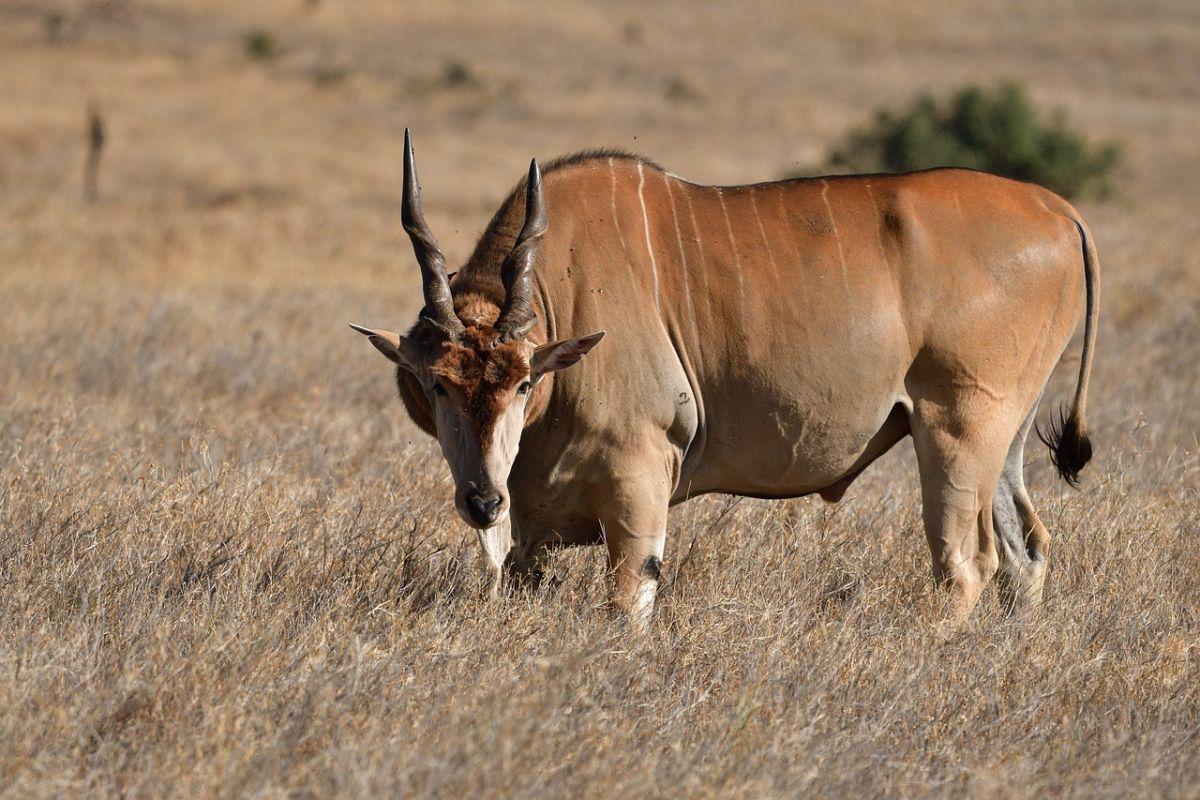
- Name: Common eland
- Scientific name: Taurotragus oryx
- Conservation status:
The common eland, also known as the eland antelope or the southern eland, is a large species of antelope found in the eastern and southern parts of Africa. It inhabits plains and savannas and primarily feeds on leaves and grasses.
In Mozambique, the common land can be found in large herds of up to 500 individuals and is not territorial. Although it is considered of least concern, its population is decreasing due to hunting, habitat fragmentation, and habitat loss.
13. Blue monkey
- Name: Blue monkey
- Scientific name: Cercopithecus mitis
- Conservation status:
The blue monkey, also known as the diademed monkey, is a species of Old World monkey native to Central, South, and East Africa. In Mozambique, it is found in the northern half of the country, as well as the southernmost areas.
This primate feeds on figs, insects, fruits, twigs, and flowers, and it inhabits evergreen forests and montane bamboo forests. Its main threat is habitat loss, as it particularly loves tall trees, which are becoming rarer and rarer.
14. Aardvark
- Name: Aardvark
- Scientific name: Orycteropus afer
- Conservation status:
The aardvark is a medium-sized species of mammal native to all of sub-Saharan Africa. It is a very peculiar-looking, burrowing animal with a characteristic pig-like snout. An insectivore, it primarily feeds on ants and termites, which it digs out of their hills with its powerful legs and sharp claws. It lives in burrows in which it can hide its young, and it is exclusively active at night.
Believe it or not, the aardvark’s closest relatives are manatees, hyraxes… and elephants!
15. Bryde’s whale
- Name: Bryde’s whale
- Scientific name: Balaenoptera brydei
- Conservation status:
Bryde’s whale is a medium-sized species of whale native to temperate, subtropical, and tropical waters of the world. It was named after the Norwegian consul to South Africa Johan Bryde, who helped create the first whaling station in the country.
This whale belongs to the same group as humpback whales, which can also be found off the coast of Mozambique, and blue whales. It blows water about 3 to 4 m / 10 to 13 ft high.
16. Spinner dolphin
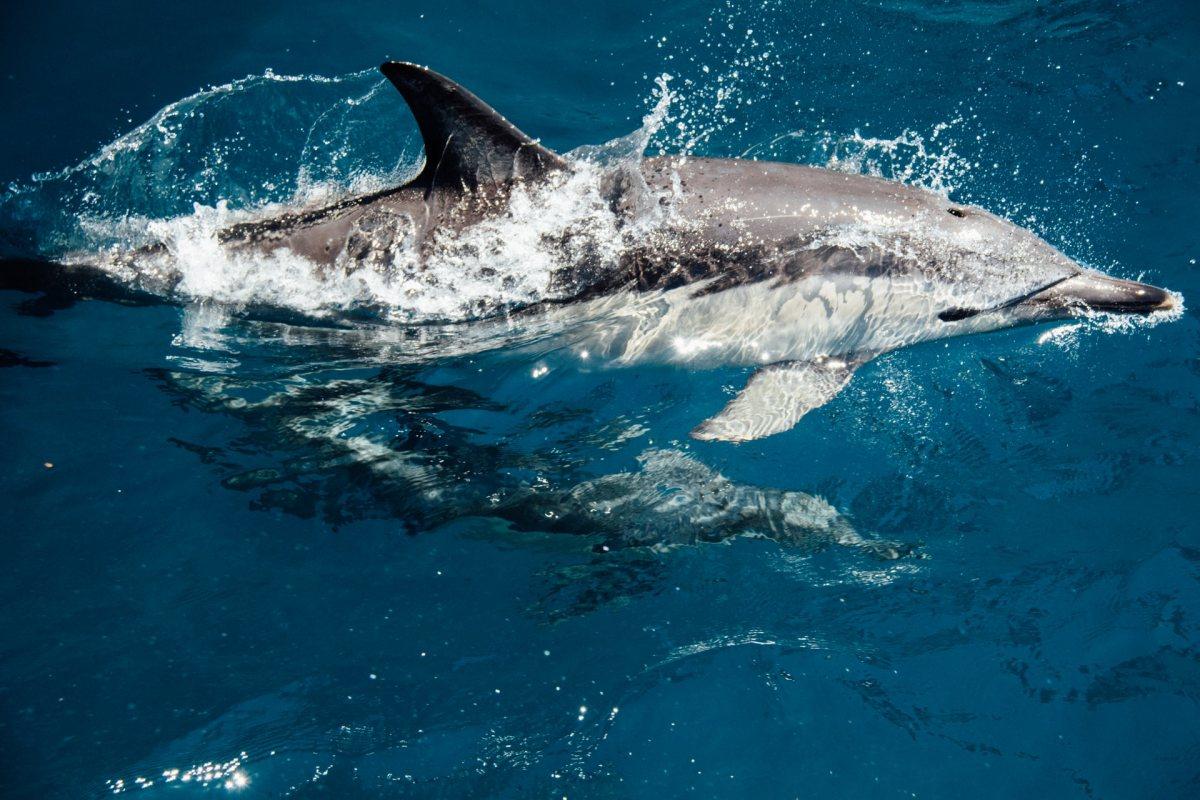
- Name: Spinner dolphin
- Scientific name: Stenella longirostris
- Conservation status:
There are lots of species of dolphins and whales found in Mozambican waters, such as the orca, the sperm whale, or the pantropical spotted dolphin, but we cannot talk about all of them, so let’s focus on the spinner dolphin.
The spinner dolphin is a small species of dolphin that can be found in subtropical and tropical waters of the world. It is famous for its acrobatic displays, from which it gets its name, and is a nocturnal animal that rests in shallow bays during the day.
17. South African ostrich
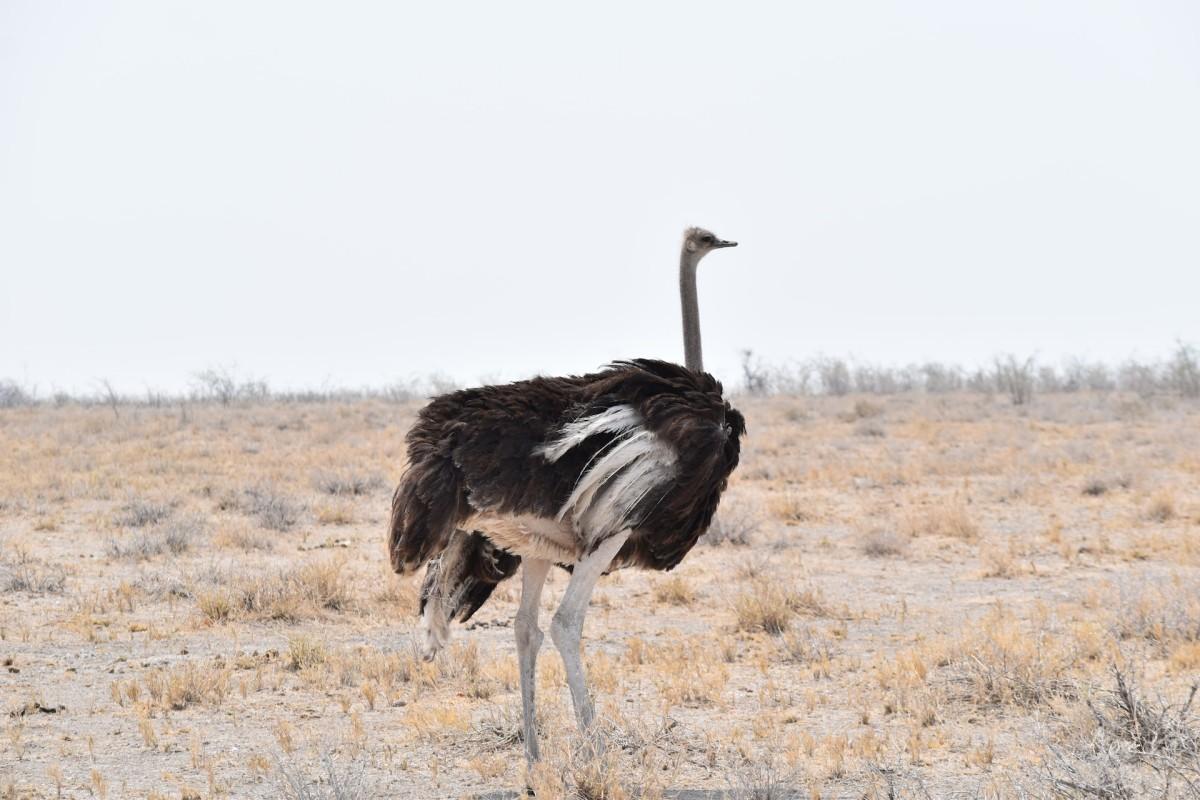
- Name: South African ostrich
- Scientific name: Struthio camelus australis
- Conservation status:
The South African ostrich, also known as the Cape ostrich, the southern ostrich, or the black-necked ostrich, is a subspecies of the common ostrich endemic to southern Africa. In Mozambique and neighboring countries, it is widely farmed for its very large eggs, feathers and meat.
Not only is the ostrich the largest living bird on the planet, but it also lays the biggest eggs, and can reach incredible speeds of up to 70 km/h / 40 mph!
18. Crowned eagle
- Name: Crowned eagle
- Scientific name: Stephanoaetus coronatus
- Conservation status:
Similarly to dolphins and whales, there are also tons of eagles, vultures, and other birds in Mozambique, and the crowned eagle is one of them.
Also known as the African crowned eagle or the crowned hawk-eagle, this large species of bird of prey is native to sub-Saharan Africa, and can only be found in eastern parts of southern Africa such as Mozambique. Its global numbers are rapidly decreasing because of habitat loss, and it could become vulnerable to extinction very soon.
—
So there you have them, these were my 18 wild animals in Mozambique. I hope you enjoyed this list and that you learned something new today.
In case you want to learn more about animals in the country, feel free to keep reading, as I still have lots of things to tell you about:
Endangered Animals of Mozambique
This is definitely the saddest part of the list, but it is very important to raise awareness. Because of this, let’s go through the list of endangered animals in Mozambique.
Here are the animals in danger of extinction in Mozambique.
- Labeo worthingtoni
- Quirimbas mongrel frog
- Chambo
- Largetooth sawfish
- Black rhino
- Hawksbill turtle
- and 24 more…
- Nyanga River frog
- Zambezi flapshell turtle
- Barau’s petrel
- Madagascar pond-heron
- African savanna elephant
- and 67 more…
To see the full list of endangered species in Mozambique, head over to the International Union for Conservation of Nature’s Red List.
What is the National Animal of Mozambique?
The national animal of Mozambique is the African savanna elephant.
The African savanna elephant, also known as the African bush elephant, is the largest land animal on the planet, and one of the main symbols of Africa as a whole.
It is an important symbol of resilience and strength and is protected in much of its range. However, this elephant is seriously threatened by habitat loss, as well as poaching for its ivory.
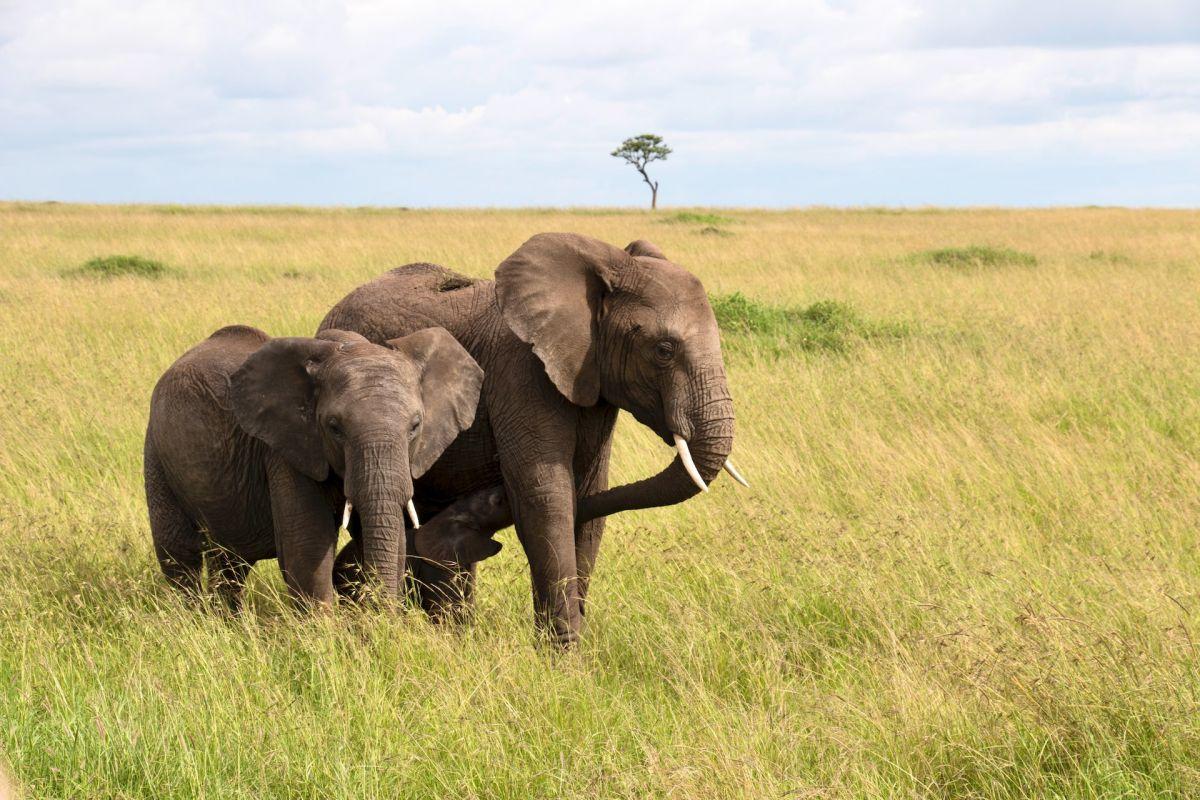
How Many Animals Native to Mozambique?
What is the diversity of native animals in Mozambique?
Let’s look at the total number of species of Chordata (mammals, birds, fishes, and reptiles).
Total number of animal species in Mozambique: 3,288 (14,205 in total in sub-Saharan Africa)
More About Animals in the World!
Loved these Mozambique animal facts? Want to see what animals live in other countries?
Then check out these posts:
Or click here to see ALL the facts up on the blog! Spoiler alert: there’s A LOT of them.
Share the knowledge! Click on the buttons below to share information about these famous animals in Mozambique with your friends, and help them learn more about the world 🙂
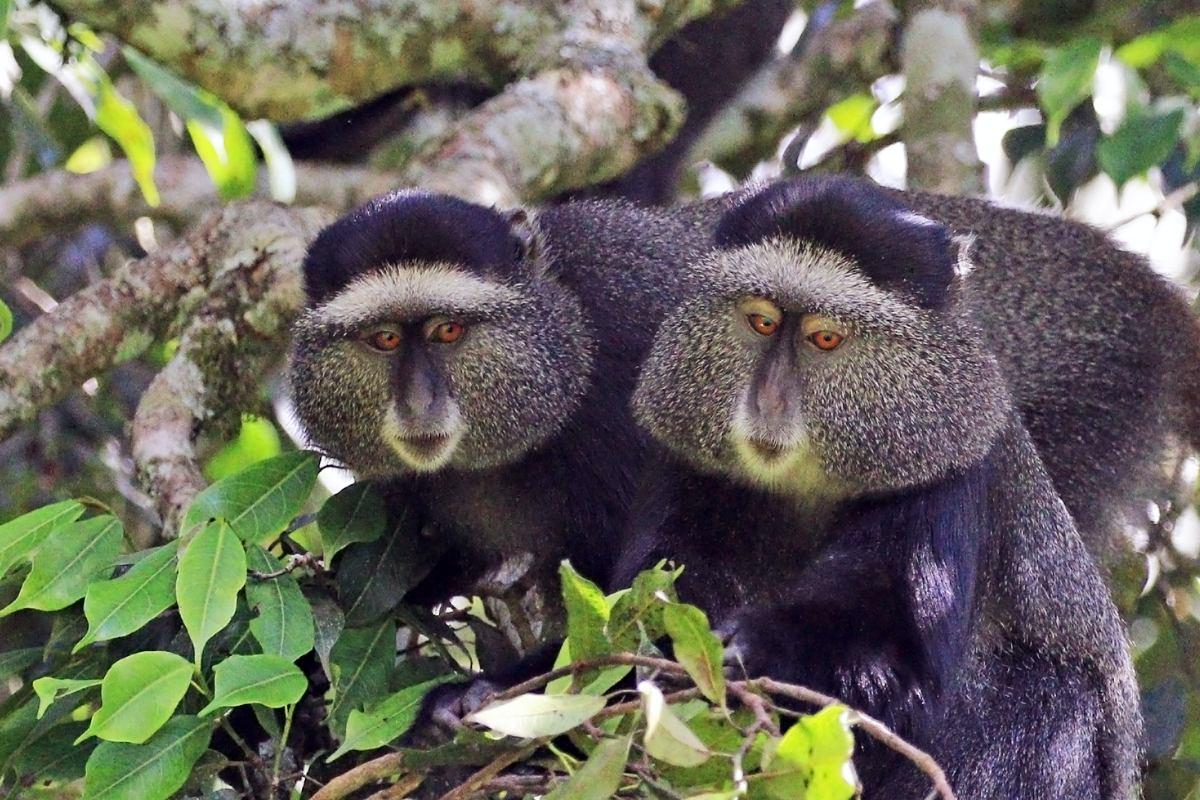
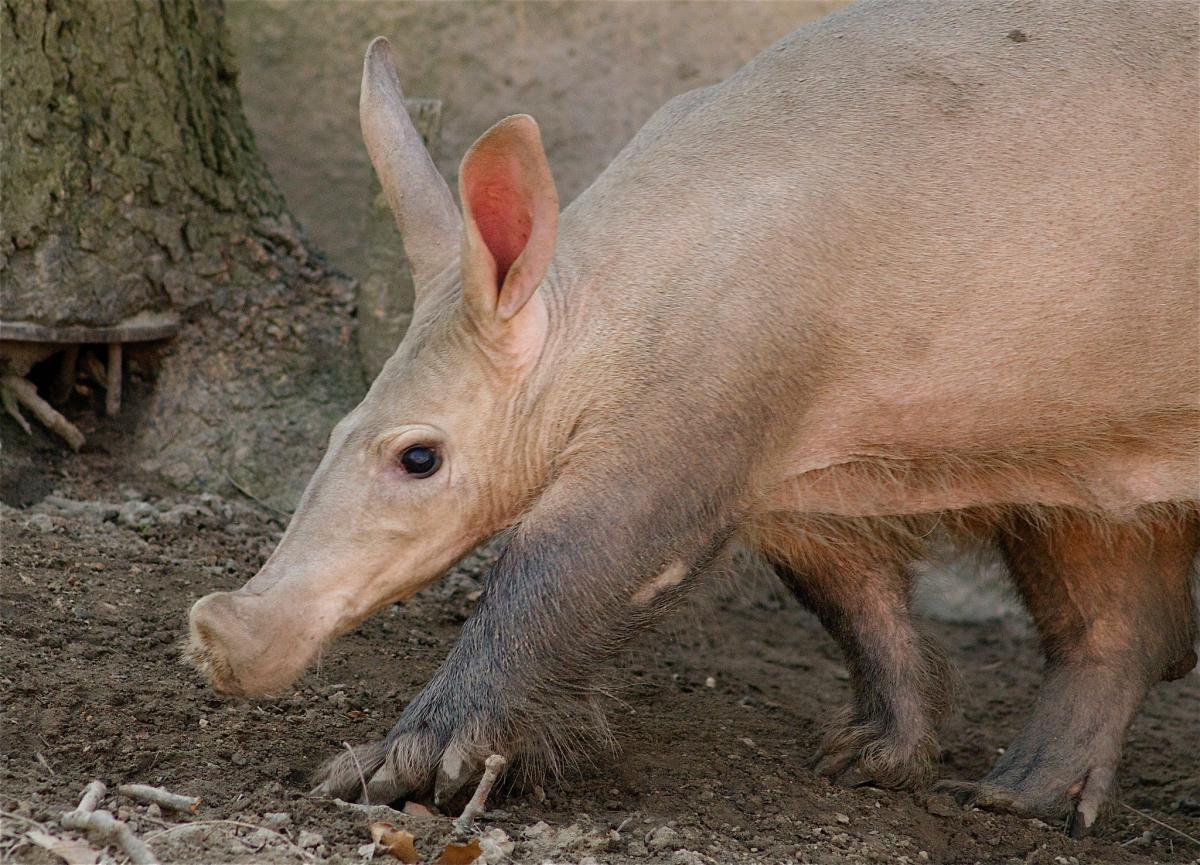
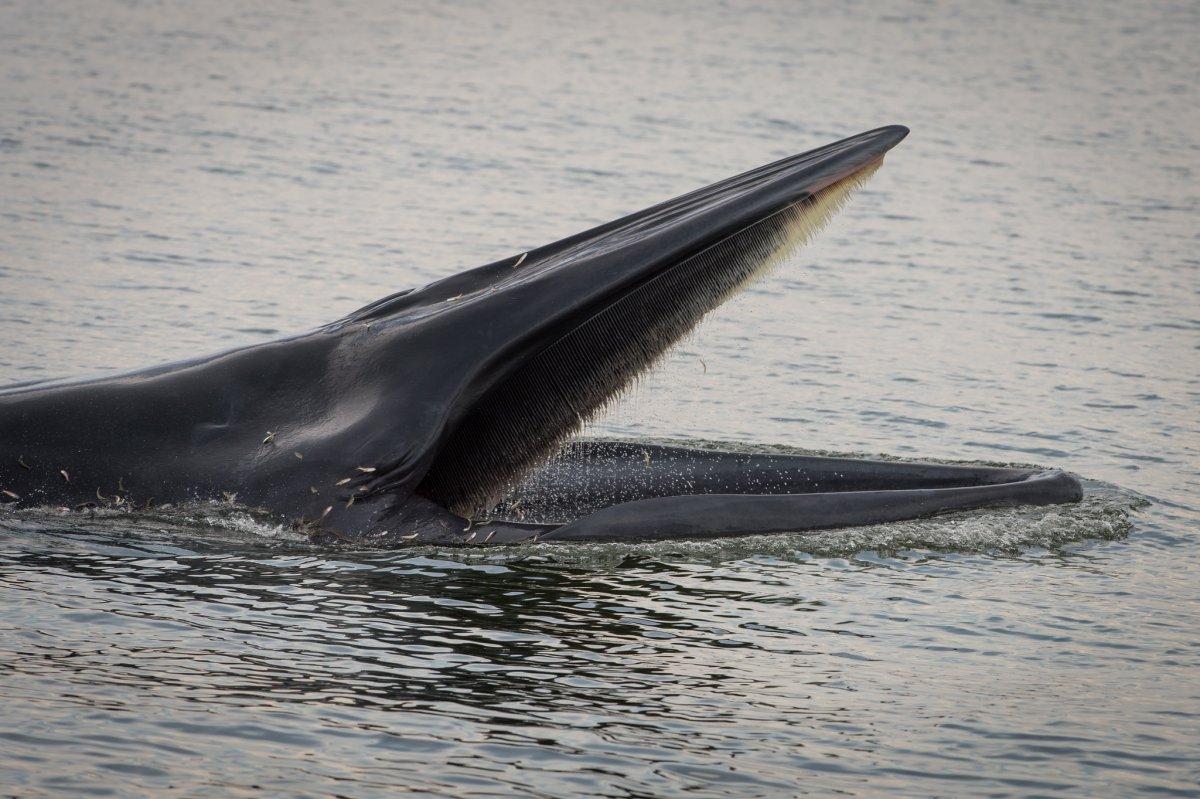
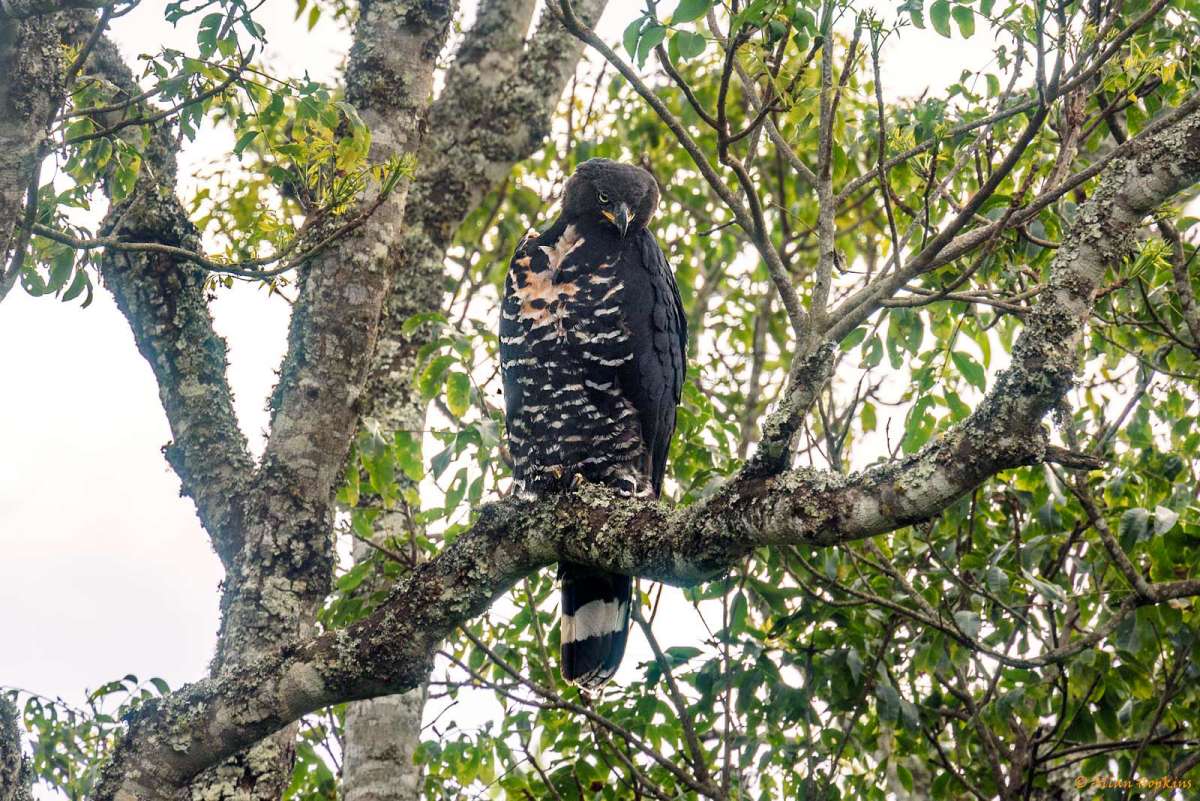

![21 Wild Animals in Montenegro [Wildlife in Montenegro]](https://www.kevmrc.com/wp-content/uploads/2022/06/21-wild-animals-in-montenegro.jpg)
![27 Wild Animals in Mexico [Wildlife in Mexico]](https://www.kevmrc.com/wp-content/uploads/2022/08/27-wild-animals-in-mexico.jpg)
![21 Wild Animals in Trinidad And Tobago [Wildlife in Trinidad And Tobago]](https://www.kevmrc.com/wp-content/uploads/2022/08/21-wild-animals-in-trinidad-and-tobago.jpg)